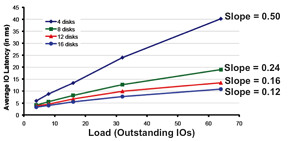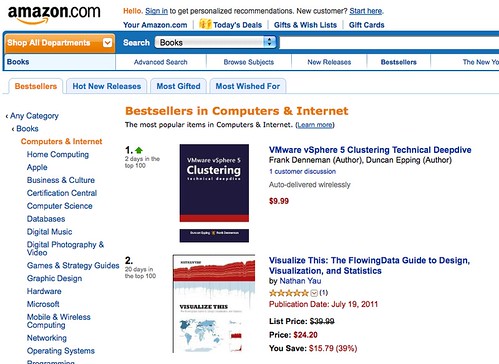A couple of weeks ago I wrote an article about Storage DRS (hereafter SDRS) interoperability and I mentioned that using SDRS with Auto-Tiering solutions should work… Now the truth is slightly different, however as I noticed some people started throwing huge exclamation marks around SDRS I wanted to make a statement. Many have discussed this and made comments around why SDRS would not be supported with auto-tiering solutions and I noticed the common idea is that SDRS would not be supported with them as it could initiate a migration to a different datastore and as such “reset” the tiered VM back to default. Although this is correct there is a different reason why VMware recommends to follow the guidelines provided by the Storage Vendor. The guideline by the way is to use Space Balancing but not enable I/O metric. Those who were part of the beta or have read the documentation, or our book might recall this when creating datastore clusters select datastores which have similar performance characteristics. In other words do not mix an SSD backed datastore with a SATA backed datastore, however mixing SATA with SAS is okay. Before we will explain why lets repeat the basics around SDRS:
SDRS allows the aggregation of multiple datastores into a single object called a datastore cluster. SDRS will make recommendations to balance virtual machines or disks based on I/O and space utilization and during virtual machine or virtual disk provisioning make recommendations for placement. SDRS can be set in fully automated or manual mode. In manual mode SDRS will only make recommendations, in fully automated mode these recommendations will be applied by SDRS as well. When balancing recommendations are applied Storage DRS is used to move the virtual machine.
So what about Auto-Tiering solutions? Auto-tiering solutions move “blocks” around based hotspots. Yes, again, when SvMotion would migrate the virtual machine or virtual disk this process would be reset. In other words the full disk will land on the same tier and the array will need to decide at some point what belongs where… but is this an issue? In my opinion it probably isn’t but it will depend on why SDRS decides to move the virtual machine as it might lead to a temporary decrease in performance for specific chunks of data within the VM. As auto-tiering solutions help preventing performance issues by moving blocks around you might not want to have SDRS making performance recommendations but why… what is the technical reason for this?
As stated SDRS uses I/O and space utilization for balancing… Space makes sense I guess but what about I/O… what does SDRS use, how does it know where to place a virtual machine or disk? Many people seem to be under the impression that SDRS simply uses average latency but would that work in a greenfield deployment where no virtual machines are deployed yet? It wouldn’t and it would also not say much about the performance capabilities of the datastore. No in order to ensure the correct datastore is selected SDRS needs to know what the datastore is capable off, it will need to characterize the datastore and in order to do so it uses Storage IO Control (hereafter SIOC), more specifically what we call “the injector”. The injector is part of SIOC and is a mechanism which is used to characterize each of the datastore by injecting random (read) I/O. Before you get worried, the injector only injects I/O when the datastore is idle. Even when the injector is busy and it notices other activity on the datastore it will back down and retry later. Now in order to characterize the datastore the injector uses different amount of outstanding I/Os and measures the latency for these I/Os. For example it starts with 1 outstanding I/O and gets a response within 3 miliseconds. When 3 outstanding I/Os are used the average latency for these I/Os is 3.8 miliseconds. With 5 I/Os the average latency is 4.3 and so on and so forth. For each device the outcome can be plotted as show in the below screenshot and the slope of the graph indicates the performance capabilities of the datastore. The steeper the line the lower the performance capabilities. The graphs shows the test where a multitude of datastores are characterized each being backed by a different number of spindles. As clearly shown there is a relationship between the steepness and the number of spindles used.

So why does SDRS care? Well in order to ensure the correct recommendations are made each of the datastores will be characterized in other words a datastore backed by 16 spindles will be a more logical choice than a datastore with 4 spindles. So what is the problem with Auto-Tiering solutions? Well think about it for a second… when a datastore has many hotspots an auto-tiering solution will move chunks around. Although this is great for the virtual machine it also means that when the injector characterizes the datastore it could potentially read from the SSD backed chunks or the SATA backed chunks and this will lead to unexpected results in terms of average latency and as you can imagine this will be confusing to SDRS and possibly lead to incorrect recommendations. Now, this is typically one of those scenarios which requires extensive testing and hence the reason VMware refers to the storage vendor for their recommendation around using SDRS in combination with auto-tiering solutions. My opinion: Use SDRS Space Balancing as this will help preventing downtime related to “out of space” scenarios and also help speeding up the provisioning process. On top of that you will get Datastore Maintenance Mode and Affinity Rules.
